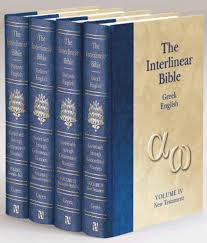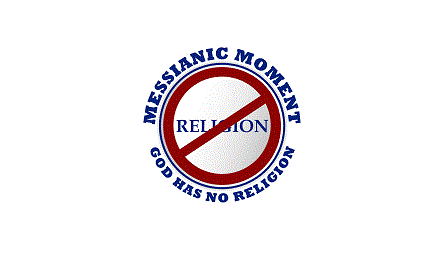In the last lesson we talked about extra-biblical tools to use when interpreting the Bible, and today we will continue on this line with two more of what I consider to be essential exegesis tools: a concordance and the Interlinear Bible set.
If you prefer to watch a video, click on this link: Watch the video.
The most well-known concordance is “Strong’s Exhaustive Concordance of the Bible”, which is a tremendously exacting study of every single word in the Bible and where to find every single occurrence of it. You also are given the Hebrew and Greek translation of the word.
And if nothing else, the tome is so heavy that using it will not only improve your understanding of the Bible, but it will tone your muscles, as well.
There are some who do not agree that Strong’s Concordance is the best one out there, and I am not going to argue one way or the other, because the focus of this course is to learn how to properly interpret the Bible, and as far as I am concerned, I don’t really care which concordance you want to use, just so long as you are using one.
For me, the concordance is most valuable when I am trying to find other places in the Bible where a certain word or phrase is used, to help make sure that what I believe it means is hermeneutically (remember that word?) validated by where it appears elsewhere in the Bible.
The other valuable extra-biblical exegesis tool I want to tell you about is the Interlinear Bible. Here is a picture of the one I use:
These volumes give you the English, Hebrew, Aramaic, and Greek translation of every single word, in the order they appear. That means that syntax and placement of the words are not going to be like any other translation you read because the word order is literally as it is printed.
For example, right from the start, we read in Genesis 1:1 that in the beginning, God created the heavens and the earth, but when we look at the interlinear word-by-word translation it says in the beginning, created God the heavens and the earth. This is a small change, but it helps to better understand the issues that happen when translating from one language to another, especially when the placement of adjectives, adverbs, and syntax have different rules.
The Interlinear Bible series has the English translation with the Hebrew and Aramaic for the Old Covenant writings and the English translation of the Greek for the New Covenant. Of course, there are no Hebrew New Covenant writings available, although you can find articles stating that the Gospel of Matthew was probably originally written in Hebrew. Perhaps one day we may find a viable copy of a Hebrew New Covenant letter or book, but as it is now, the interlinear can only give us the Greek to English translation for the B’rit Chadashah (New Covenant.)
As we finish our discussion about extra-biblical resources, let me mention that the two I have discussed above are not the only extra-biblical resources available. You can read the Apocrypha (found mostly only in Catholic Bibles) to enhance the narratives about biblical people and events, and the Talmud to get rabbinical commentary on the events in the Tanakh, as well as learning HaLacha, the Way to Walk, which is the Jewish lifestyle. You can even learn Jewish mythology. I use the Talmud because it has been composed by the great Rabbis of the past and I respect their learning and wisdom. That doesn’t mean I accept what they say or believe it all to be “gospel”, but it does help to know what they think when forming my own conclusions.
There are other resources, some of which people consider to be scripture, such as the Book of Enoch, the Gospel of Judas, the Zohar (Kabbalist) and, let’s not forget, the New Covenant source document called the Codex Alexandrinus.
Let’s get real, people- anything out there which can help you better understand the language, usage, and culture of those who actually wrote the Bible is valuable in helping to properly interpret what you read, but I would also add this caveat: what God says to us is “scripture” and what people say is not. There is a difference between God directing Moses to write something down or giving a Prophet the words to say, and Shaul (Paul) writing a letter to one of his Gentile congregations with his instructions regarding how they should follow what God said.
Extra-biblical resources are written by people, not by God, so remember that as you use them.
To end this topic, remember also that the best guide to understanding the Bible is to ask God to show you, through the Ruach HaKodesh (the Holy Spirit) what he wants you to see in his word. There can be multiple messages within the same sentence or passage, and each could be correct for the person reading it. For example, there are prophecies that are considered dual, meaning they have an immediate future impact and a far-reaching future impact, as well. Two different meanings from the same passage and both are correct within the context of their separate timelines. So always be aware, always be open to being led by divine understanding, and never stop reading the Bible.
The more times you read it, the better your understanding will become.
In our next lesson, we will be discussing a totally different aspect of properly interpreting the Bible, so until then…
L’hitraot and Baruch HaShem!
